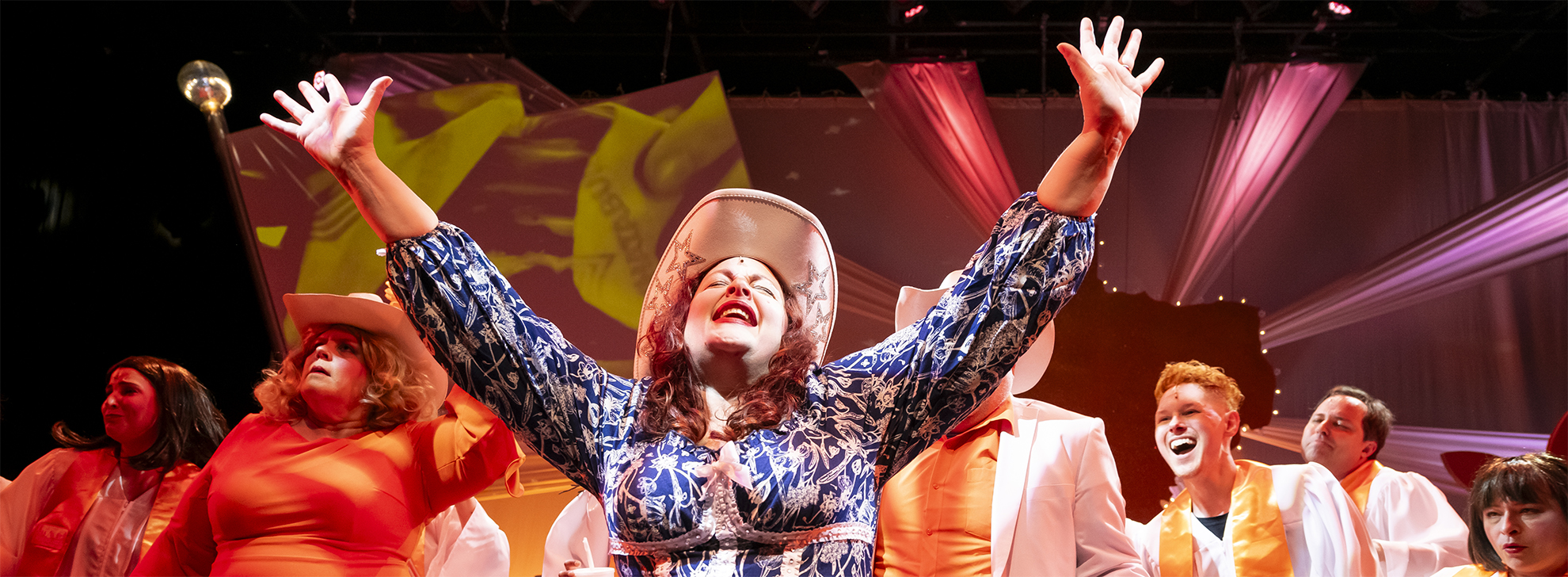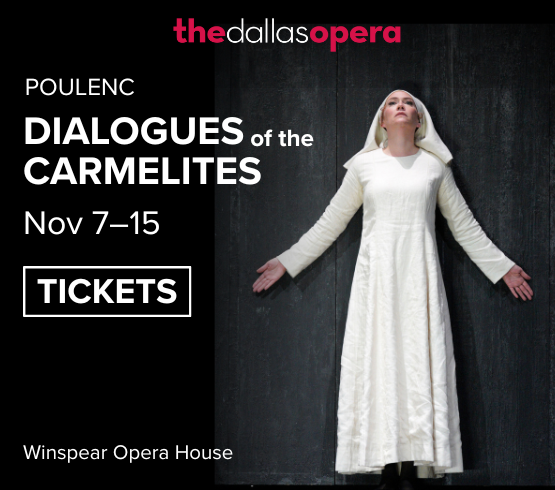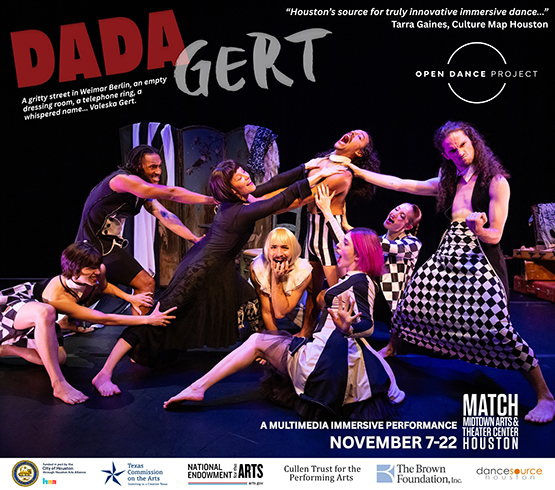A few years have passed since live performance returned to stages across Texas after the pandemic, and we at Arts and Culture have been thinking about how easily its siren song called us back.
For me, the allure lies with the performing arts’ two contradictory qualities: impermanence and infinite variations. Whether I’m in the room for a world premiere dance or the millionth production of Hamlet, I know that exact performance created by those specific artists in that precise time and space for this audience has never existed before. And once that moment has passed, it will never exist again. Even a recording for posterity will never capture the true sensory experience of all the players, whether artists or audience: the smell of sweat in the leap, the heat of stage lights, the rustle of programs, the taste of intermission wine lingering on the lips.
That’s just my own love of the ephemeral. For others, it might be the ritual of the season subscription or the human connection in the applause. Perhaps for artists, it’s that adrenaline dive into the unknown each night. We wanted to deepen our understanding of what live performance means to artists and audiences, so we asked them.
Inspired by Charles Santos, executive/artistic director of TITAS/DANCE UNBOUND, and his season tagline, “Be in the Room,” we asked an array of performing artists, presenters and programmers, as well as arts writers and performing arts supporters to tell us their own stories of being in the room during those impermanent moments of the infinite when live art was made.
Those stories fit into four main categories: social connections, beginning and endings, one night only, and personal recollections. Together they give us a view into why artists continue to create work in the moment and the many ways the performing arts weave meaning into our lives.
Vuyani Dance Theatre’s CION: Requiem on Ravel’s Bolero dealt with the slave trade and took place in a cemetery. You might expect a dark and heavy work exploring a powerful and challenging topic from the South African company; yet the work, certainly powerful, was overwhelmingly uplifting and gorgeous. Audiences were overwhelmed; many moved to tears from beginning to end, but certainly not in a negative way. It was a celebration of culture, and as amazing as the choreography was, the vocalists, singing in three different South African languages and moving about the stage like a Greek chorus, were absolutely haunting. The audience, bringing their own life experiences and histories into the room, explored history and culture together in a shared experience.—Charles Santos, executive director/artistic director of TITAS/DANCE UNBOUND
During the pandemic, Catastrophic kept live theatre going with our small touring group, Drama Squad, which performed stripped-down theatrical pieces in Houstonians’ yards and driveways. One of my favorite Drama Squad performances was for a young couple and their new baby, in the front yard of their duplex. As the show began, a cyclist slowed his roll and stopped on the other side of the street, taking it all in. He was soon joined by a couple of other people passing by on a walk and some neighbors on porches, over fences, and peering out windows. There was something so special about that one particular day. Art was so inaccessible then, and this was a gift to our small audience but also for us, the performers. It was so deeply appreciated and spontaneous, this connection between the artists and audience, and exactly why I do what I do!—Tamarie Cooper, actor and Catastrophic Theatre co-founder
I started out working backstage. One of my first big jobs was as a touring sound technician with Pina Bausch, the legendary choreographer whose extravagant productions created the form of dance-theater. The tour brought me to UT’s Bass Concert Hall in 1999. The show was called Nelken, German for carnations, which covered the entire stage. I couldn’t have imagined that 20 years later I would become the director of that same venue. But it wasn’t the only connection that night. When I met my now-wife Leah Cox in New York years later, I discovered she had attended that very same show as undergrad at TCU.—Bob Bursey, artistic director, Texas Performing Arts at the University of Texas at Austin
Most folks are familiar with stories of an actor or two breaking character by laughing, during the show. One night, during our production of George Bernard Shaw’s Misalliance at Main Street Theater, the entire cast lost it. It happened during a scene in which I was telling off Mark Robert’s character: I had him by the lapels and was laying into him when I completely lost my ability to speak clearly and a garbled mess left my mouth followed by the most enormous spit ball, which splatted smack dab between Mark’s eyes! Well, we both started to crack. The audience was howling, and as I looked around the stage every other actor was laughing. I have, to this day, never experienced a more prolonged laugh from an audience. It’s so naughty to break character…but those moments are absolutely delicious. — Joel Sandel, actor and co-host of YouTube channel: Car Takes with Deborah and Joel
ROCO’s performance at the Holocaust Museum in early March 2020 was my first outing after having my son. Little did I know it would be the last in-person event for a long while. The concert was about the pianist, Alice Herz-Sommer, a survivor of the Auschwitz concentration camp where she had to perform for the guards as part of her torture, yet it was also the thing that gave her life and a purpose. The performance included a video of her performing Chopin in her home at the age of 109 on her old, out of tune upright piano. Then, in the middle of the piece, pianist Mei Rui took over to perform the rest of it live. After that, I was in isolation with my newborn son with no family support in Houston, and my husband was an essential worker all through the pandemic. So, being in an audience full of people moved together in this moment and then going into absolute isolation was a very stark difference and made me value the power of being in the shared space of a live performance.—Amanda Watson, ROCO board member and Piano Specialist at Steinway Piano Gallery
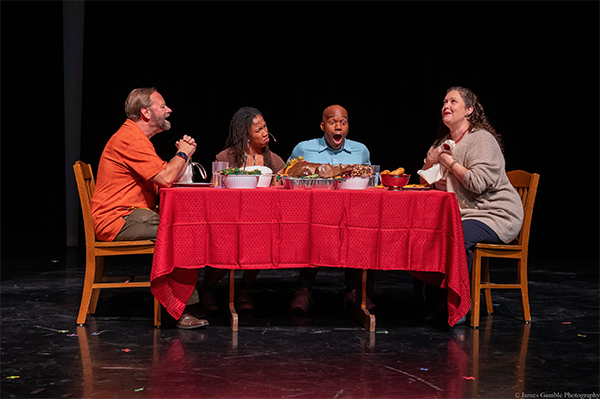
1 ⁄ 11
Domonique Champion, David McClain, Miranda Herbert Morris, and Mikaylah Wade in the Fade to Black Festival production of Melda Beaty’s Guess What’s For Dinner? Photo by Rudy Mui.
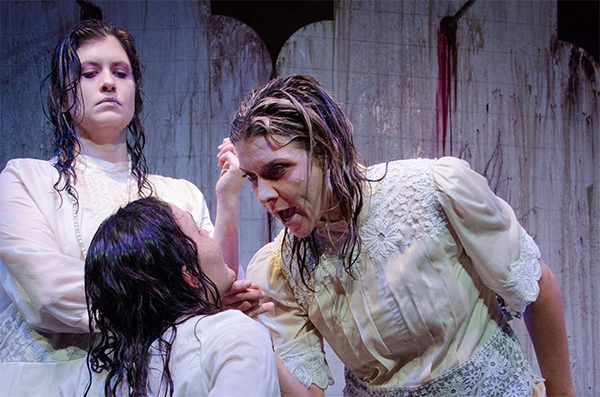
2 ⁄ 11
Miranda Morris, Courtney Lomelo and Patricia Duran in the Mildred’s Umbrella production of The Drowning Girls, 2015. Photo by Gentle Bear Photography.
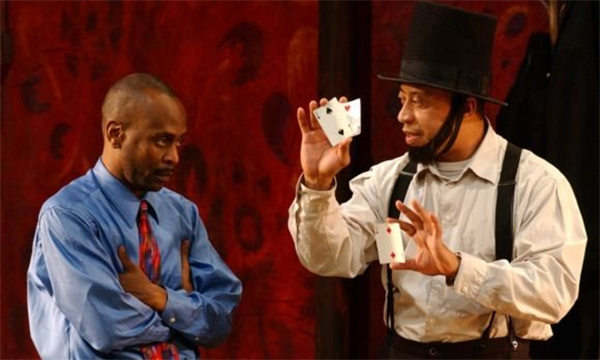
3 ⁄11
K. Todd Freeman and David Rainey in Alley Theatre’s 2004 production of Topdog/Underdog. Photo courtesy of Alley Theatre.
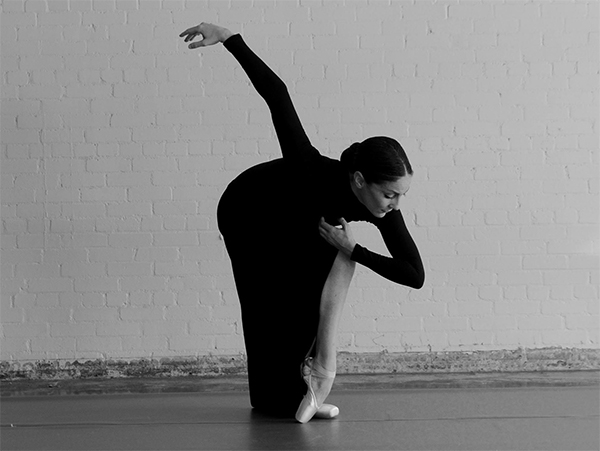
4 ⁄11
Bruce Wood Dance Dallas Artistic Director Joy Bollinger; Photo courtesy of the artist.
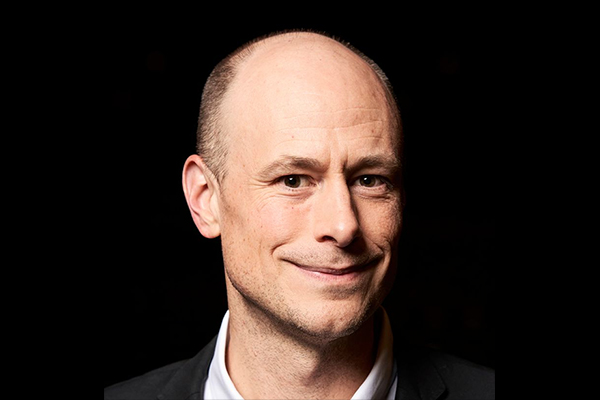
5 ⁄11
Texas Performing Arts Executive Director Bob Bursey; Photo by Matt Wright Steel.
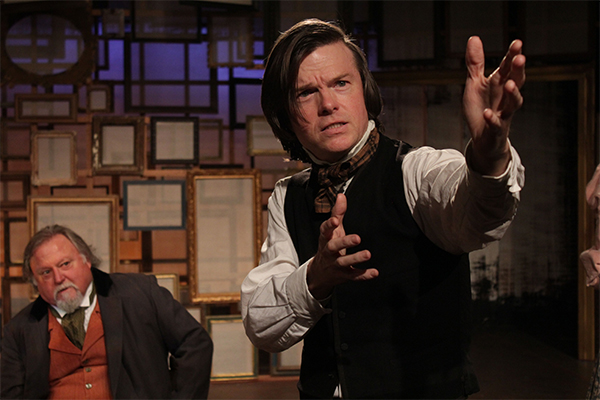
6 ⁄11
Rutherford Cravens and Joel Sandal in the Main Street Theater production of Tom Stoppard’s The Coast of Utopia, 2012. Photo by Ricornel Productions.
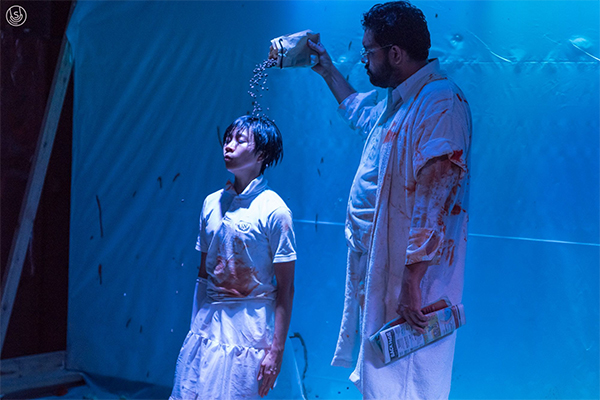
7 ⁄11
Alexa Capareda and Derek Kolluri in the Frank Wo/Men Collective production of Tiskettasket. Photo by Alex Masi.
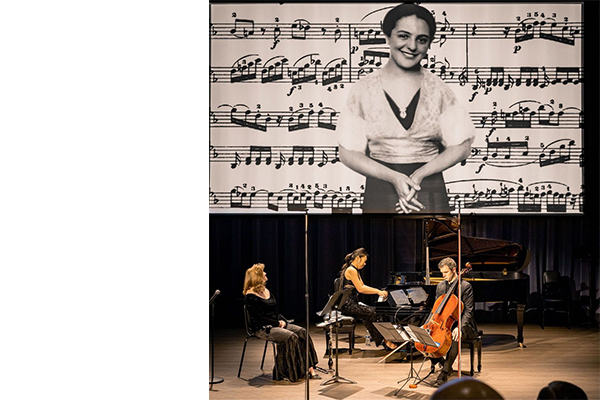
8 ⁄11
Mei Rui, Alicia Lawyer and Richard Belcher in the ROCO production of “We Were The Music” at Holocaust Museum Houston, 2020. Photo by Ray Kuglar, Blueprint Film Co.
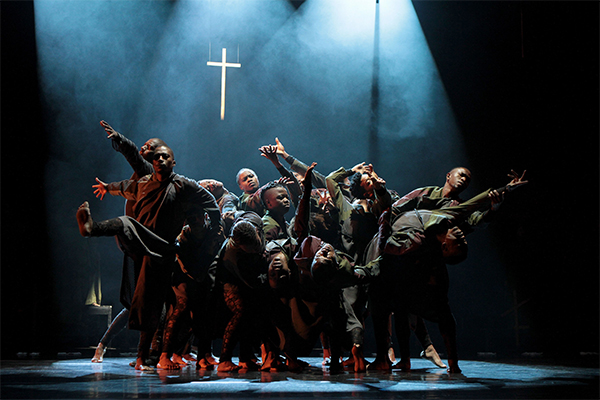
9 ⁄11
Vuyani Dance Theatre in Cion. Photo courtesy of TITAS.
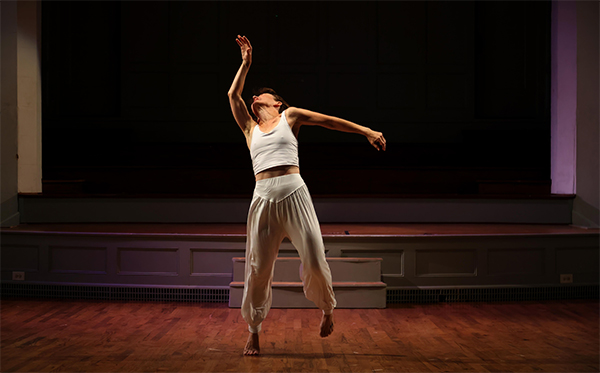
10 ⁄11
Dancer, choreographer and educator Jennifer Mabus. Photo by Amitava Sarkar.
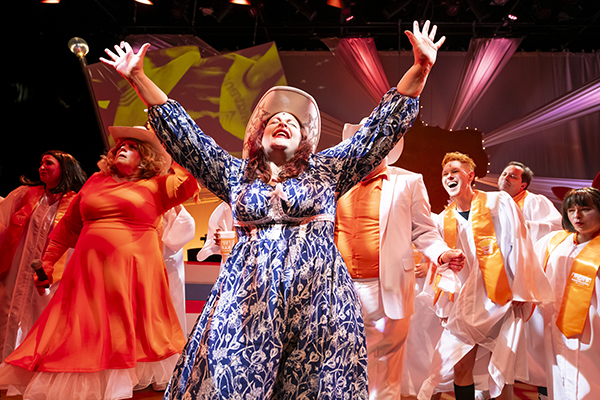
11 ⁄11
Tamarie Cooper and cast in the Catastrophic Theatre production of Tamarie's Texas Toast, 2024. Photo by Anthony Rathbun.
The Phantom of the Opera was one of the first musicals I saw as a child (too young, probably, there were nightmares), and it remained my theatrical anchor for the next 30-some years. Between national tours, Broadway, and the West End, I’ve probably seen that chandelier drop 10 or more times. When Broadway’s longest-running musical announced it would be closing in April 2023, I made one last trip to the Majestic Theatre, but I wasn’t alone. My then-boyfriend, now fiancé, got to experience Phantom during his first-ever trip to New York City that preceding December. It was his first Broadway show, and I was honored to introduce it to him. When the auctioneer cried, “Perhaps we may frighten away the ghost of so many years ago with a little illumination? Gentlemen!” and the pyrotechnics flashed, the curtains rose, and the organ thundered, I held my future husband’s hand and cried a little too.—Lindsey Wilson, arts writer
As I entered the Ted Shawn theater at Jacob’s Pillow to watch the Merce Cunningham Dance Company, I ran into a friend and he mentioned that this would probably be the last time we’d see the company while Merce was still alive. As I was taking my seat the young woman behind me told her friend that Merce is probably not still alive. I turned around to correct her and stopped midway, leaving things be. He passed away that evening after watching the show from his laptop. I cherish that I was at that performance.—Nancy Wozny, editor-in-chief, Arts and Culture Texas
At the age of 12, my mother took me to see Sam Houston State University’s production of “My Fair Lady”, the first ‘grown up’ show I remember seeing, and I was completely bowled over. The venue, at that time, was the theater in the Old Main building, which had those old wooden theater seats that you had to fold down to sit on. We had seats in the very back row and, as I wasn’t very tall, I knelt on the seat to give me some height, which wasn’t terribly comfortable but, once the first notes of the orchestra rang out in the hall until the final bow, I didn’t move. I was utterly transfixed, rapt and enchanted. When I walked outside, after the show, the air had changed, my life had changed. I didn’t know it at the time, but I had seen my future. —Joel Sandel
I attended a performance of Patrick Hawes’s The Son of Man, performed by Chamber Music Houston and members of the Houston Symphony at the South Main Baptist Church in Houston. This particular performance had the usual excellent musicians and vocalists, but one thing that stood out for me this time was the voice of the tenor, Adam Catangui. There was something about the acoustics of the space in relation to where we sat that seemed to send his voice directly to me like a super channel. It was a wonderful experience. —Mark Wozny
In the 1980’s, I was a young student training at The Fort Worth School of Ballet. I was asked to carry out a bouquet of flowers for the curtain call following Fort Worth Ballet’s final performance to Bach’s Brandenburg Concerto. I waited in the dark backstage area, careful not to make a sound. As I peered onto the stage, the lights revealed Todd Edson and Maria Terezia Balogh floating through an exquisite pas de deux. Their gaze set into the distance, their bodies connected seamlessly in movement and time. Every nuance, down to their fingertips and breath, seemed to whisper a story. Frozen in time, I suddenly startled, realizing the duet has finished. A tear rolled down my left cheek. The lingering of that moment, those feelings, the coinciding of simplicity and power, stayed with me and has been the never-ending search that compelled me towards a career in dance and continues to compel me as a choreographer to this day.—Joy Bollinger, artistic director, Bruce Wood Dance Dallas
I was at Artpark when the two principals of the ballet company slipped into the orchestra pit. The audience gasped in horror. After a few minutes the couple emerged triumphant and unharmed. The rest of the performance felt supercharged. I still wonder about the violin section. —Nancy Wozny
During Holst’s dramatic Jupiter, a loud BEEP BEEP BEEP erupted from my half of the orchestra. Colleagues exchanged confused glances, our conductor’s face expressed concern, and then it hit me—a rogue alarm clock on stage that the conductor used to keep the concert on time had decided it was its time to shine. What was so odd is that the tempo of the beeping was completely in sync with our music for quite a few measures. With no handbook for “orchestral clock protocol,” I stopped playing, grabbed the offending timepiece, and bolted offstage to toss it to a bewildered stagehand like it was a ticking-time bomb. When I returned, I was greeted by quizzical looks from those who did not know what was going on, and a few stifled giggles and knowing nods of approval from those in the loop. The clock may have stolen the spotlight for a moment, but it added a uniquely human twist to the live performance.—Ben Grube, ROCO violinist and Director of Strings at Texas Southern University
The fizzy hissing sound of 60+ soda cans being opened all at once, the snaps of celery stalks and carrots as the audience provided a foley sound score for a video game-like, bone-breaking fight, these were the visceral scenes from Tiskettasket (2017), a Frank Wo/Men Collective physical theater production. Audience members were given baskets of food and soda and instructed to perform certain tasks at orchestrated moments that included hurling food bits onto performers on a plastic-lined stage. This is the kind of “live”-ness—in an intimate garage made proscenium-style with platform seating—that had to be experienced. While the smell of cleaning up the show was memorably less than pleasant, it was always worth the feeling of togetherness in the raw, glee-filled playground of such a 4D interactive production.—Alexa Capareda, choreographer and performer
I was in a production of Company at Stages Theatre playing the role of Amy. I’m not a singer, but I’ve got an ear, and the only solo I had was a patter song, “Getting Married Today.” Patter songs are fast and furious. Not a lot of room for error. One night, I “went up” on the last verse. The panic set in immediately, but then I remembered all of my improv training and made up lyrics in the moment, making it rhyme, make sense and keeping the rhythm. It got a huge applause. I thought “no one caught on…I nailed it.” It was only in the dressing room I was told that in that “hyper focused moment” I actually froze, except for the slow, half-split I did all the way down to the floor. I did have a recollection of staring at the floor but not the descent or how I got back up. The applause, I believe now, was for the splits. —Deborah Hope, actor and co-host of YouTube channel: Car Takes with Deborah and Joel
Back in our earlier days, in a production of Waiting For Godot, at the long since demolished Zocalo Theater, we had a surprise guest performance by a raccoon. In this play, Pozzo tosses a chicken bone onto the ground which is coveted and chewed upon by Gogo…and in this case, also by our raccoon friend. The raccoon shimmied down a pillar from the warehouse roof and then made himself quite comfortable in the sand on the set, chicken bone in his dextrous little hands. He finished his treat and shimmied back up the pillar, pleased with his debut as an actor in a Beckett play. The entire meal lasted ten minutes. Ten minutes, in which the audience paid absolutely NO attention to the play and all attention to the new chicken bandit/experimental theatre star.—Tamarie Cooper
A good play shakes the world a bit and the people performing it as well. On opening night of Suzan-Lori Parks’ Pulitzer prize-winning play Topdog/Underdog the lights came up too soon at the very end, catching the actors in a moment when the play’s shattering power was still pulsing through them. It was an intensely vulnerable moment shared by actors and audience that can only happen in shared space.—Nancy Wozny
Topdog/Underdog remains one of my most memorable theatrical experiences. And one of the most meaningful moments happened after the show. I was outside of the stage door talking to someone on our technical staff who had seen the play a few days earlier. She said to me, “David, I just hope there are not really places like that.” And then she started crying. It was an important moment for me. This is what theatre should be. It can, and should, move people to feel something, or make us think, or cause a release, not simply be another thing to do. These kinds of experiences have since shaped the work I try to put on the stage. —David Rainey, actor
In 2017, The Danielle Georgiou Dance Group staged a free production during a residency at the Dallas Public Libraries. The matinee audience, a mix of theater and library patrons, watched a female character frantically looking for her gloves, worried that someone had broken into her home. Without warning, a woman in the audience stood up, walked forward, and offered the performer her own socks to wear as gloves. “Here, take my socks; it’s all I have, but they will keep you warm.” We were surprised by her empathy. She later admitted that this was the first play she had ever seen, and, unsure of the rules, felt compelled to help the character. She, of course, did the correct thing. And what made it possible for this audience member to improve our performance is that we performed live. —Danielle Georgiou, artistic director, Danielle Georgiou Dance Group
We hosted Ben Folds at Jones Hall a few weeks ago. Before the performance, there was a private VIP soundcheck and meet-and-greet. The small group of guests sat up close to the stage for a rehearsal, then took photos with Ben on stage at the piano. There was no one else in the theater. It was a really special experience for those who got to attend. Afterward, as people were leaving, I noticed someone pause and gasp—not dramatically, but with genuine surprise, looking around. “Have you ever been in an empty theater like this?” I asked. “Never” he replied. “Not like this one. Not anything close.” The wonder just radiated—a nice moment that felt profound. A reminder that the space itself can take us out of our routine.—Meg Booth, President & CEO, Performing Arts Houston
I will never forget an immersive dance work I created in the sacred space of Arts Mission Oak Cliff. The performance was about the moments in our life that change us, and I used the entire building. One of the collaborators, Christie Bondade, was in the tiny kitchen, dancing gestures of care, and asking audience members “What nourishes you?” As she asked, one audience member spontaneously began to dance with Christie. This person had no formal training, but they created a beautiful improvisatory duet. Everyone in that room was emotionally moved by her vulnerability and bravery. This woman later reflected that the moment was expressive of her current journey in life. I am so grateful that I get to partner with audience members in our common transformation as human beings. —Jennifer Mabus
I was mesmerized by the Mildred’s Umbrella production of The Drowning Girls, a one-act play performed entirely in three water-filled bathtubs. I loved it so much that I returned to see it a second time, this time with friends in tow, something I rarely do. Nearly a decade later, my theater company cast Miranda Herbert Morris, one of the actors from that unforgettable play, in our production of Melda Beaty’s Guess What’s For Dinner? I had been her fan ever since, so having her join our cast was a delightful full-circle moment. —S. Denise O’Neal, Executive Director/Playwright, Fade to Black Festival
One year, during Stage West’s performances of our outreach-based annual Festival of the Kid featuring original short plays written by K-12 students, a young playwright sat with her mom in the audience as they watched her play come to life. The plot: a young woman who was sexually molested during her first grade year by her stepdad later finds her voice and community through theatre in middle school. Unbeknownst to any of us at the time, the story was true, and it was the first time the mother learned about it. The pair sat alone, crying and holding each other, in the theatre after the festival was over. Later, the stepdad was arrested and jailed. One never knows when theatre will be the vehicle that changes a person’s life.—Dana Schultes, executive producer Stage West
On September 5th, 2001, we opened Elizabeth Rex at Stages, a story about Ned Lowenscroft, the actor in Shakespeare’s company who plays all the mature women’s roles and moves Queen Elizabeth I by his ability to express a woman’s emotions fully and freely. As she’d never been able to express how she felt at the loss of her greatest love, Robert Dudley, she asks Ned to teach her how to mourn. I played Ned in that production. A few days after we opened, the Twin Towers came down. It was a daunting task to deal with grief on stage as grief was pervasive worldwide. A few weeks after we closed that production, I was at Central Market when a woman approached me and asked if I had been the actor in Elizabeth Rex. She told me that right after the attacks on September 11th she had been in shock and had been emotionally numb. She said the play finally broke through and allowed her to cry. She expressed a gratitude I’d never heard from someone who’d seen a show that I was in. It was one of the most profound moments in my life.—Joel Sandel
—TARRA GAINES

